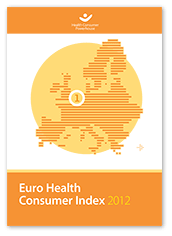Government is seldom an instrument of change.
Government is seldom an instrument of change.
State institutions tend to lag behind society in recognizing and addressing disruptive issues. Rather than leading, the federal government tends to be a bandwagon trailing society, from the grassroots up.
All the biggest, most important historical developments tend to follow a pattern: society slowly begins to adopt a new way of thinking, behaving, or organizing, until “new” becomes “standard” and the change is gradually accepted. Then, well after the majority have embraced the transition, the government gets on board and makes it official.
American medicine, remarkably, defies this pattern, and government mandates are seemingly necessary to usher in what, in all other industries and facets of society, are seen as inevitable changes.
How can a profession so deeply integrated with academics and progress be so resistant to change?
On the surface it can seem like the academic and clinical settings are closely linked: internships help students bring theory into practice under professional supervision; training hospitals partner with schools and programs to invest in young doctors and nurses and ensure an exchange between generations of clinicians; continuing education opportunities proliferate, with everything from conferences to online courses promising caregivers access and instruction in the latest medical knowledge and best practices.
Yet the culture of change-resistance continues to thrive in healthcare. While technology, society, and modern market forces cope with disruption, medical breakthroughs mask a broader tendency for change to come slowly, if at all.
It would seem that initial certification provides a foundation for developing clinical habits, and obligatory continuing education (CE) helps sustain them. CE with an eye to advancement is optional, and only for those practitioners who want the change of title and responsibility. This is a problem, because it can conceal stagnation under a mirage of professional development.
Attending annual CE events is not sufficient to instill a progressive, entrepreneurial mindset in healthcare professionals looking to sustain their clinical careers. Clearly, too many clinics are reacting to change instead of leading it, and national standards are doing more to disrupt entropy than to ensure best practices and new standards are truly uniform and universal. Meaningful Use stirred the pot, but the ultimate goal of interoperability remains distant and conflicted; in an environment where medical leadership embraces change and is prepared to integrate technology and new habits, Meaningful Use might have been helped align disparate integration instead of initiating first-time adoption of EHR.
But there it is: authentic leadership is almost as rare in medicine as it is in politics. Instead of leading, they are reacting to change, or else resisting it entirely until outside forces make it inescapable. There is simply not enough being done to prepare nurses and physicians to engage with medicine not just as caregivers, but as entrepreneurial leaders.
Clinicians are ill-equipped to benefit from a fully interoperable EHR network if the culture in which they operate is not responsive to change. Dr. Victoria Wangia of the University of Cincinnati calls informatics, “…the balance between health information, information technology, and patient care.”
Balance is precisely what is lacking—specifically, the leadership talent and vision to help healthcare institutions embrace both the technology powering informatics, and the data their employment generates. It isn’t just informatics; patient care and institutional risk-exposure require strong leadership to achieve balance. Quality and efficiency of care require balance, and clinical leadership must be nimble and determined to realize it.
The relationship between the schools training physicians and nurses, and the clinics in which they operate, has yet to fully achieve any such balance. Swelling demand for caregivers places emphasis on getting more clinicians, but without necessarily equipping them to lead, manage, and innovate within their organizations. Technology drives skill gaps, yet clinics reluctant to adopt and engage negate the benefit of CE programs that might otherwise begin to fill the void. The culture, in short, is lacking vision.
If medicine is to truly transition into the new century and beyond, its students require more instruction in the business of healthcare. Entrepreneurs, not just caregivers, are needed. More than anything, leaders who manage change—not politicians who slowly follow it—are a key ingredient in bringing balance to American medicine. Federal programs have prodded healthcare, but true leadership must come from within its ranks.







